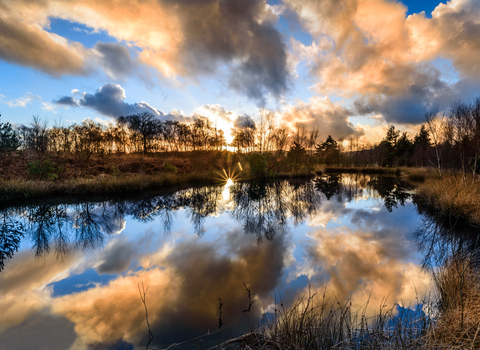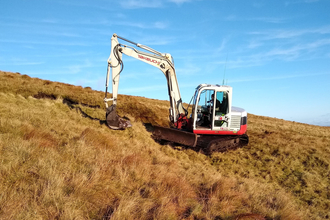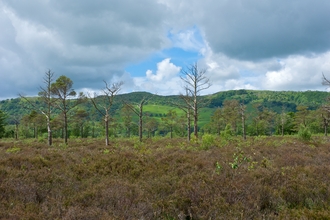Peatland Restoration in Cumbria
What are peatlands?
Peatlands, often referred to as bogs, fens or mires, are unique and fascinating ecosystems characterised by their waterlogged and acidic conditions. With their unparalleled ability to
Why do peatlands matter?
- Peatlands cover just 3% of the Earth’s surface, yet hold nearly 30% of all soil carbon.
- Peatlands are the world’s largest terrestrial carbon stock, storing more than twice the carbon found in all the world’s forests.
- 70% of our drinking water comes from upland areas dominated by peatlands.
- Peatlands are home to some incredible wildlife, including rare wading birds such as dunlin and curlew, as well as interesting plants like the carnivorous sundew and squishy Sphagnums.
Example of carbon storage at Bampton common
Carbon
Due to the waterlogged conditions of peatlands, Sphagnum (peat forming bog mosses) don’t decay after they die. This means that the carbon stored within is not released as carbon dioxide, but instead is held in the ground as peat.
As a result, peatlands are the UK's largest carbon store - with 28.5 million tonnes in the Lake District alone.
A five per cent loss of UK peat soils would be equal to the entire annual, man-made, carbon emissions.

Foulshaw Moss Nature Reserve © Les Fitton
Water quality and flood control
Peatlands act as a natural sponge, absorbing excess water during periods of heavy rainfall and releasing it slowly. This natural water regulation helps to prevent flooding downstream and maintain a consistent flow of water in streams and rivers.
Peatlands also act as a natural filter, purifying water as it passes through the Sphagnum moss layers. This filtration process helps to improve water quality, reducing the cost of treatment for drinking water.
What threats do peatlands face?
Peatlands face many anthropogenic threats, including:
- drainage for agricultural use and forestry
- peat extraction to burn as fuel or for horticultural use
- overgrazing
- fire
All of these actions degrade peatlands, releasing massive amount of carbon dioxide into the atmosphere, ultimately contributing to climate change. Damaged peatlands also result in wildlife declines and increased drinking water treatment costs.
Peatland restoration case studies
Due to our cool and wet climate, Cumbria is home to 31,000 hectares of blanket bog alone - equivalent to over 43,400 football pitches! Since 2012, Cumbria Wildlife Trust’s peatland team has surveyed over 10,000 hectares and successfully restored over 3000 hectares of peatland throughout the county.
Meet the Team
Acting Head of Land Recovery - Gemma Jennings
Acting Peatland Team Manager - Susie Webb
Peatland Officer - Heidi Buck
Peatland Officer - Tom Lemmey
Peatland Officer - Melanie Sugden
Peatland Officer - Grace Fuller
"Since 2012, Cumbria Wildlife Trust’s peatland team has surveyed over 10,000 hectares and successfully restored over 3000 hectares of peatland throughout the county."










